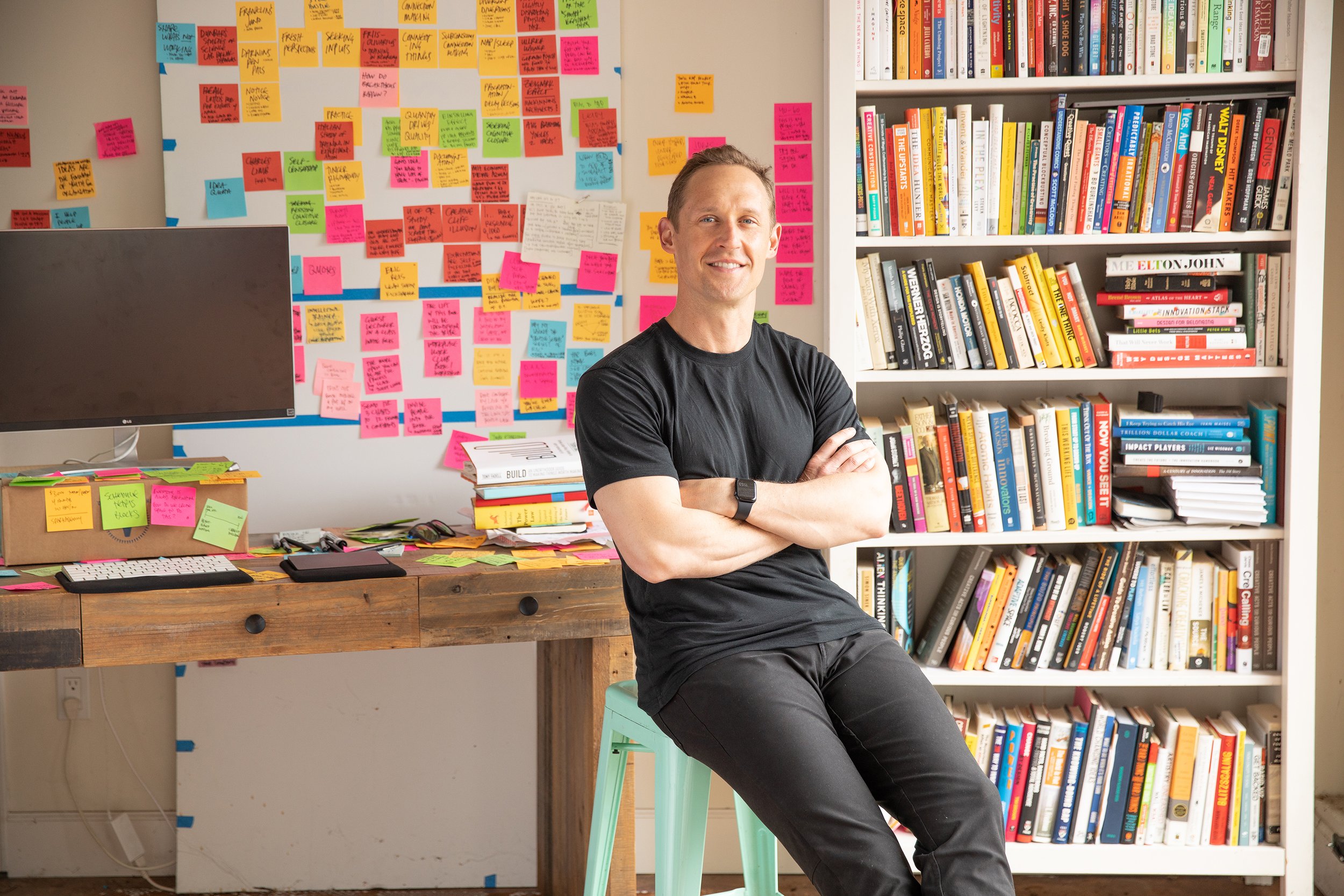
Methods of the Masters
A blog on the art & science of creative action.
Exercise Your Creativity
What is your regular creative training regimen? David Kelley once told me, “I think people fail to realize that the first-order goal is to be getting in practice. The first step is training your mind to think differently.”
Imitate the Masters
Frank Lloyd Wright is one of the most celebrated architects of the twentieth century. I was delighted to discover two routine habits that contributed to his breakthrough thinking.
Drive Innovation By Caring
Subconscious processing has tremendous potential to deliver breakthrough thinking. But you can only tap into that potential if you actually care about a problem.
Share What You Learn
When we use information, it cements it into our long term memory. We know that inputs fuel output. What’s much more surprising is that outputs reinforce inputs, too.
Think Like A Founder
How do you know when it’s time to iterate?Founders have to be willing to adapt based on real-time feedback, and iterate accordingly.
Frame the Work
Harvard Business School Professor Amy Edmondson says that framing a meeting — like the d.schools, “Flaring or focusing?” meeting-opener — helps teams do the work they need to do, in the way they need to do it.
Hunt for Connections
The fundamental responsibility of the innovator is to forge new connections. But how does one do that? Here are a few starting suggestions.
Measure Your Ideaflow
After a dozen years teaching at Stanford’s d.school and consulting with the world’s top leaders, the most useful measure of creativity that Perry Klebahn and I have found is deceptively simple.
Chart A Breakthrough
Most folks are the victims of a breakthrough more often than they are the perpetrators of one. It doesn’t have to be that way. We can tempt lightning… Or at least, we can increase the odds of a strike.
Examine Your Resistance
Almost every attempt to introduce innovation is met with resistance. By examining the surprising sources of resistance, we can learn how to frame innovation in a way that wins minds.
Immerse Yourself
We can inadvertently insulate ourselves from the very things that bother our customers. When we immerse ourselves in our own products and processes, we viscerally experience what needs to be reinvented.
Look Up To Somebody
Music executive Jonathan Azu uses a simple formula to remain inspired: every two weeks, he meets with a leader he admires.
Get A Side Project
Marcus Hollinger is a modern day renaissance man. A steady gig as SVP of Reach Records didn’t keep him from starting coffee company on the side. Far from sapping him of creative energy, the side-hustle fuels fresh thinking.
Request Options
Legendary Stanford professor Bob McKim had a simple, standard response to any student seeking his feedback on a new project. Google X’s Astro Teller does something similar today.
Consider the Odds
Innovation is a numbers game. Knowing prior probabilities helps founders calibrate their efforts. Some simple math can improve your speed of learning dramatically.
Be Your Own Customer
Your company’s next product might be hiding in plain sight: where you’re already servicing your own needs. Thinking about yourself as the first customer among many, instead of the total addressable market, is a game-changer.
Embrace Constraints
If necessity is the mother of invention, then constraints are invention’s crazy uncle. Stories as varied as the origins of Wikipedia, Dyson Vacuums, and the ice industry illuminate.
Call A Time Out
Perhaps the greatest thing we can do to establish trust, is to address the elephant in the room — “Is this person safe?” — head on, straight out of the gate. Inspired by Ise Lyfe.
Normalize Growing
A recent experience in a Stanford classroom reminded me of one of the most dangerous myths we can believe about knowledge.
Write to Make Sense
Putting things into our own words turns information into knowledge. And sharing has the potential crystallize that knowledge, not just for others, but even more importantly, for ourselves.




















